
 Mr. Swapnil Bhowmick
Mr. Swapnil Bhowmick
Allergies : Types, Symptoms, Causes, Treatments | Medtalks
What is Allergy?
An allergy is what happens when your immune system overreacts to something normally innocuous. Pollen, mildew, and animal dander, as well as specific foods and items that irritate your skin, are examples of triggers, which doctors refer to as "allergens."
What happens in Allergy | What Causes Allergies
It all starts when you inhale, swallow, or come into contact with a trigger on your skin. Your body responds by producing a protein called IgE, which binds to the allergen. Histamine and other substances are released into the bloodstream as a result. This results in the symptoms you've noticed.
What are the Symptoms of Allergy | Allergy Symptoms
The way you're exposed determines your symptoms - through the air, your skin, food, or an insect sting. If you have a nasal allergy (one that is triggered by something you inhale), you may have the following symptoms:
Eyes that are itchy and watery
Sneezing
Nose itchiness and runniness
Nausea or fatigue
Rashes and hives (a rash with raised red patches) are common symptoms of a skin allergy. It's possible that your skin is red, itching, or swollen. Stomach cramps, vomiting, and diarrhea are all symptoms of food allergies.
If you were stung by an insect, you'll notice swelling, redness, and discomfort where the sting occurred. The signs and symptoms might be modest to severe. The majority of them vanish as soon as the exposure ends. Mild ones may go unnoticed for a long time. It's possible that you're simply feeling "odd." Moderate symptoms can make you feel ill, making you think you have a cold or the flu. Allergic responses might sometimes be extremely severe.
What is ADHD : Causes, Symptoms, Treatment
Allergies in the Spring | Spring Allergies: Causes, Management,
There is no cure, but you may take steps to reduce your allergy symptoms in the spring, from medicine to changing your lifestyle.
Allergies in the Summer
Pollen from grasses and weeds is the most common cause of summer allergies.
Allergies in the Fall
In the fall, the most common allergy triggers are ragweed, mold, and dust mites.
Allergies in the Winter
If you have allergies to mold or dust mites, you may experience increased symptoms in the winter when you spend more time indoors.
Hay Fever
Hay fever, often called allergic rhinitis, is an immunological illness marked by an allergic reaction to pollen grains and other chemicals. There are two types: seasonal and perpetual. Seasonal occurs only during the time of year when particular plants pollinate, while perpetual occurs all year.
Allergies to Pollen
Pollen from trees, grass, and weeds causes allergies in more than 25 million Americans.
Allergy to Mold
Every day, we are all exposed to mold, and most of the time there are no issues. If you have allergies to it, though, you may experience a reaction if you are exposed to too much of it.
Allergy to Dust
Dust mites can cause a lot of trouble for critters that you can't see.
Allergies in Dogs
Life in a dog-loving country is difficult for someone with dog allergies. A dog is present in approximately 37 percent to 47 percent of American households.
Is It Anaphylaxis or Something Else?
Anaphylaxis is the most severe allergic reaction. It has an impact on your entire body.
Among the signs and symptoms are:
Itching and hives all over
Shortness of breath or wheezing
Tightness or hoarseness in the throat
Face, eyelids, lips, tongue, or throat swelling
Hands, feet, lips, and scalp tingling
Anaphylaxis is a life-threatening condition, so seek emergency care immediately.
If you have an epinephrine auto-injector, use it and repeat if your symptoms don't improve after 5 to 15 minutes.
Even if your symptoms appear to end after you give yourself the shots, you should seek medical attention right away because a delayed reaction is still possible.
Who catches Allergy?
Allergies can be acquired by anyone, at any age. You could get them as a youngster or wait until you're an adult to notice any symptoms. Why are some people allergic to particular allergens but not others?Your genes make the biggest difference. Allergies are passed on through the generations. If your parents had allergies, you are likely to have them as well. Your chances increase if one of your parents is allergic. If both are true, your chances increase by more than a factor of two.
There's a chance you'll acquire them even if neither parent is allergic. You may inherit the proclivity for allergies from your parents, but you may never experience symptoms. Or you could develop allergies that aren't the same as your parents'.The environment around you has an impact as well. Before you acquire an allergy, you must have a predisposition and be exposed to an allergen. The more severe the exposure, the more frequently you come into touch with the allergen, and the earlier you come into contact with the allergen, the more likely you are to be allergic.
Smoking, pollution, illness, and hormones are all possible causes of allergies.
What happens during an Allergic Reaction?
Allergies can be caused by a variety of factors, like the ones mentioned in the previous section. The allergens produce IgE antibodies. These antibodies have a single-mindedness about them. Each one is specific to a certain allergen. That helps to explain why some people are allergic to peanuts but not eggs. Allergens can enter your body through the skin, eyes, nose, mouth, or stomach, among other places. This can clog your sinuses, inflame your skin, make breathing difficult, and create gastrointestinal issues.
What are the Most Common Triggers for an Allergic Attack?
Why do some people suffer from severe allergies while others do not? Experts admit they don't have all the answers, but they do agree that family history is crucial.
Among the most common allergies are:
Dander from animals
Stings from bees
Penicillin, a type of antibiotic.
Dust mites
Peanuts, tree nuts, fish, shellfish, eggs, milk, wheat, and soy
Bites by insects
Latex or other items you come into contact with
Molds, pollens, and other spores
From itchy eyes to sneezing, the signs and symptoms are numerous. Allergic reactions can range from moderate and inconvenient to severe and even life-threatening. It all depends on how your body reacts to the allergen and how much of it got into your system.
Asthma & Allergies
Asthma and allergies frequently coexist. Asthma is a condition affecting the bronchial tubes, which move air into and out of the lungs. Asthma can come in a variety of forms. Allergic asthma is a kind of asthma brought on by an allergic reaction (for example, pollen or mold spores). Many of the 25 million Americans with asthma also have allergies, according to the American Academy of Allergy, Asthma, and Immunology, and this is known as allergic asthma. The nose and windpipe, as well as the bronchial tubes, are used to take air into the body.
Alveoli, tiny air sacs at the end of the tubes, supply fresh air (oxygen) to the blood. Stale air (carbon dioxide) is also collected in the air sacs and breathed out of the body. The bands of muscle that border the airways relax during regular breathing, allowing air to flow freely.
However, there are three basic alterations that prevent air from passing easily into the airways during an asthma episode or "attack":
Bronchospasm occurs when the bands of muscle that surround the airways tighten, causing them to constrict.
The lining of the airways swells up and becomes irritated.
The mucus produced by the cells lining the airways is thicker than normal.
The lungs' ability to transport air in and out is hampered by the restricted airway. As a result, asthmatics believe they aren't getting enough breath. All of these changes make it harder to breathe.
Allergy & Sinusitis
Sinusitis is a condition in which the tissue lining the sinuses becomes inflamed or swollen. The hollow regions between your eyes, behind your cheekbones, and in your forehead are known as sinuses. Mucus is produced by them, which keeps the inside of your nose moist. As a result, dust, allergies, and pollutants are better protected. The sinuses of healthy people are full of air. Germs can thrive and create an illness if they get clogged and filled with fluid.
Sinus obstruction can be caused by a variety of factors, including:
Colds
Allergic rhinitis, a condition in which the lining of the nose swells as a result of exposure to allergens
Nasal polyps, little growths in the lining of the nose.
Allergy & Anaphylaxis
Anaphylaxis is a life-threatening allergic reaction that requires immediate medical attention. If you experience an anaphylactic reaction, you should get an epinephrine (adrenaline) shot right away, and someone should phone the emergency number for help. It can be fatal if left untreated. Within minutes, epinephrine can reverse the symptoms. If this does not occur, you may require a second shot within the next half-hour. Pre-filled and ready-to-use pens are included with these shots, which require a prescription. An antihistamine should not be used to treat an anaphylactic reaction. Anaphylaxis is uncommon, and most people recover.
Nasal polyps are teardrop-shaped growths that originate in the nose or sinuses and are noncancerous. They're most commonly located near the opening of the sinuses into the nasal cavity. The mature ones resemble peeled grapes. They're frequently associated with allergies or asthma, but they don't always create symptoms, especially if they're minor and don't require treatment. Larger ones have the potential to obstruct sinus drainage. Sinuses can become infected if there is too much mucus in them. Nasal polyps, unlike those in the colon or bladder, are rarely cancerous. Experts believe they are caused by long-term inflammation or run in families. Polyps in the nose aren't uncomfortable to the touch.
Contact Dermatitis
A rash that appears on your skin when you touch or respond to a chemical is known as contact dermatitis. It's red, itchy, and inconvenient, but it's not dangerous. An allergy or damage to your skin's protective layer could be the source of the rash. Allergic contact dermatitis and irritating contact dermatitis are two more names for it.
Symptoms of a contact allergy usually appear at the area where you touched the allergen. You'll see that your skin is:
- Itchy
- Dry, cracked, or scaly
- Bumps or blisters on the skin.
- Blistering is a rare occurrence.
- Contact your doctor if you notice blisters.
- Swollen/burning/tender skin
Irritant contact dermatitis (skin injury) is more painful and burns than itchy contact dermatitis. When something irritates or damages your skin, you'll notice a rash very immediately. When you have an allergy, the rash may take a day or two to appear. Many of the symptoms are interchangeable. Your skin may blister or develop a raised red rash in any situation. It will irritate and maybe burn your skin.
How do doctors figure out what's causing their patients’ allergies?
The majority of people learn to know their allergy triggers and avoid them in the name of allergy prevention. An allergy specialist (allergist) might be able to help you figure out what's causing your symptoms. This is accomplished through the use of a variety of allergy tests.
2. IgE antibodies to specific antigens, or allergy triggers, are typically identified by specific IgE testing. Antibodies are produced by the body to fight invaders, often known as allerg
3. An auto-injector, also known as a bee-sting kit or an autoinjector like Auvi-Q, EpiPen, Symjepi, or a generic version, may be prescribed to people with a history of significant or anaphylactic reactions. These include a dose of epinephrine that has been pre-measured.If you are exposed to a substance that causes a severe allergic reaction or experiencing any signs of anaphylaxis, you should carry two of these with you and inject yourself with the medication very far away.
Although there is no cure for allergies, there are a variety of over-the-counter and prescription drugs that can help alleviate and treat bothersome symptoms like congestion and runny nose. Antihistamines, decongestants, combination medicines, corticosteroids, and other allergy medications are among them. Immunotherapy is also available in the form of allergy shots or under-the-skin pills that gradually improve your ability to tolerate allergens.
Antihistamines
Antihistamines have been used to treat allergy symptoms for many years. They come in pill, liquid, nasal spray, and ocular drop form. Antihistamine eye drops are available over-the-counter (OTC), and nasal sprays can be used to treat the symptoms of seasonal or year-round allergies.
The Bottom Line
Allergies often do not cause massive harm to you, but they hold the potential to. It is advised to get tested early on and figure out what allergens you are susceptible to and avoid them in your day-to-day activities in order to reduce the chances of developing an allergic response or, in the worst-case scenario, anaphylaxis.

Mr. Swapnil Bhowmick
A motivated student of Medicine & Surgery (MBBS) at R. G. Kar Medical College & Hospital, Kolkata, having a knack for reading and composing medical literature. When he's not writing content for MEDtalks, Swapnil is usually looking up the latest trends and innovations in Medicine.


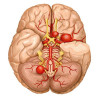

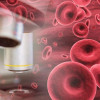
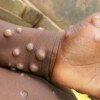
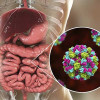
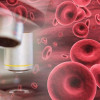


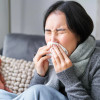
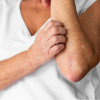
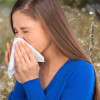
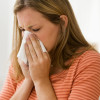

Please login to comment on this article